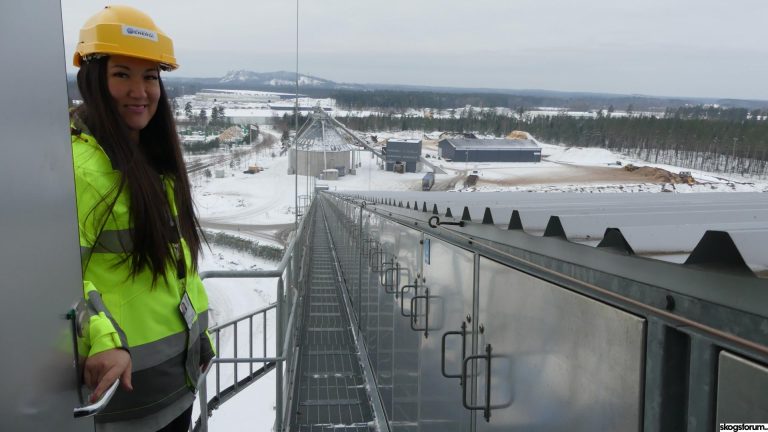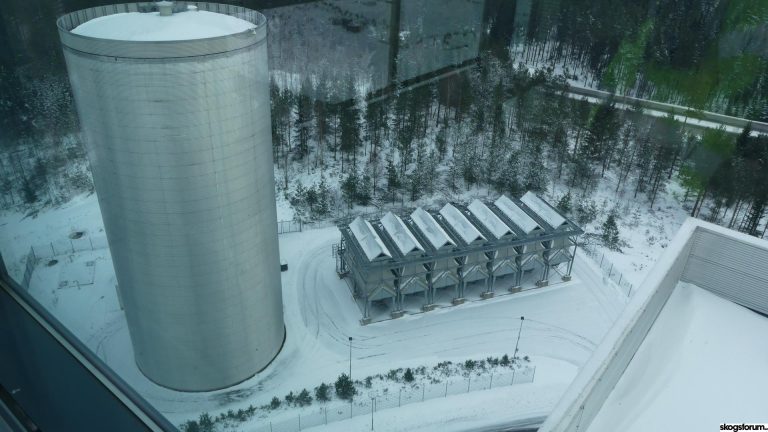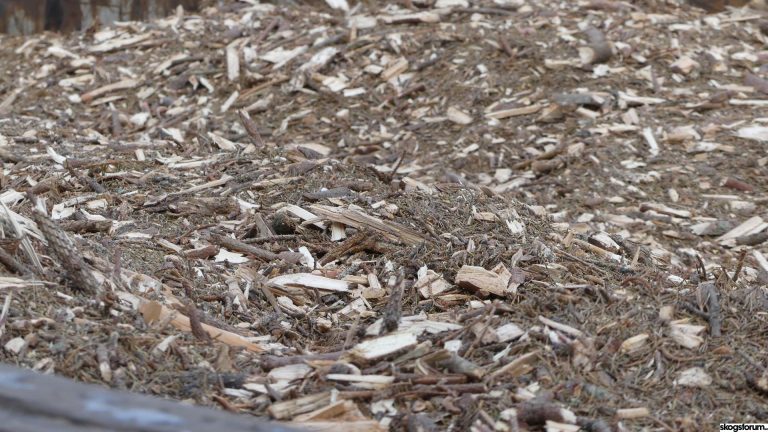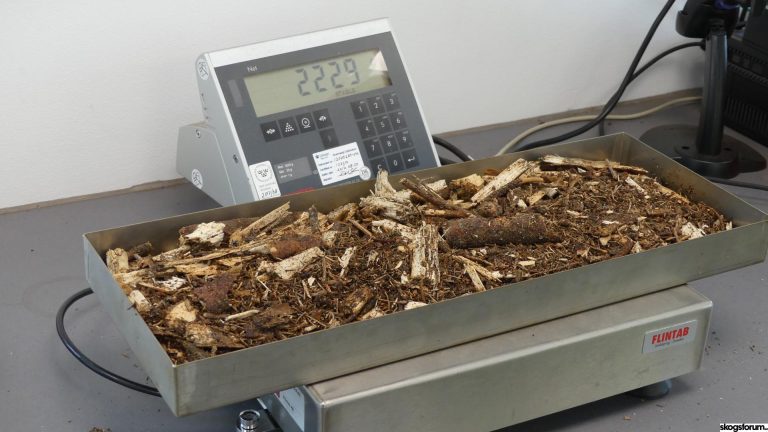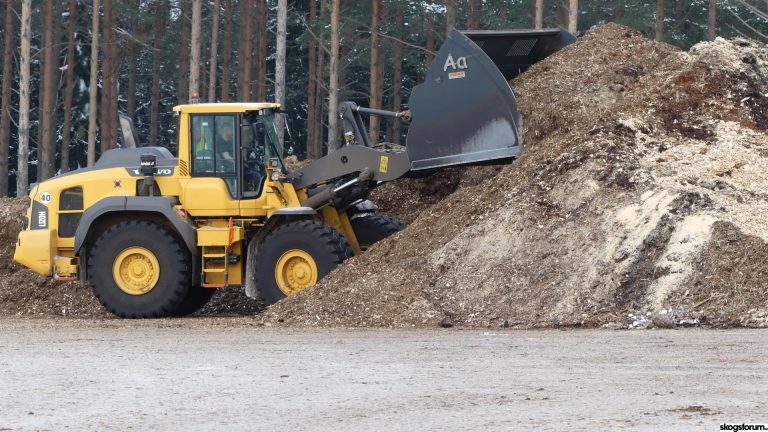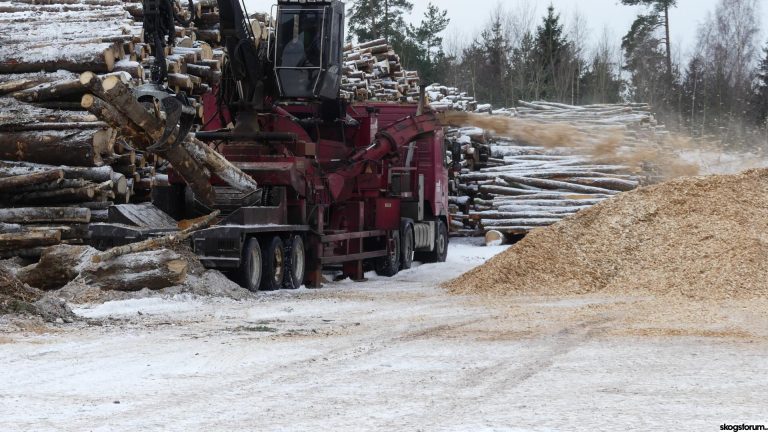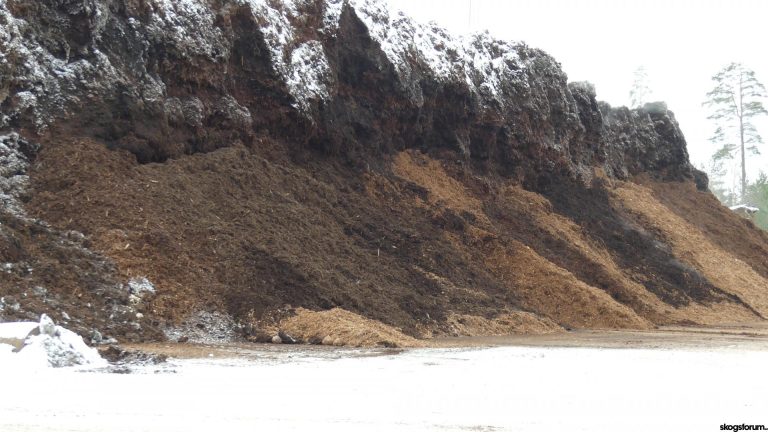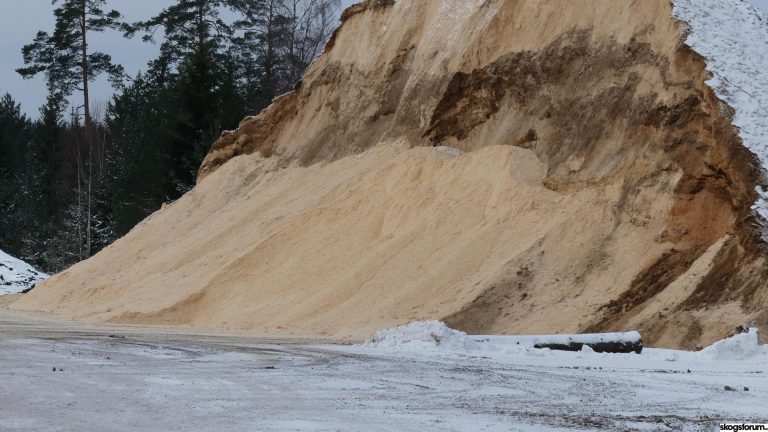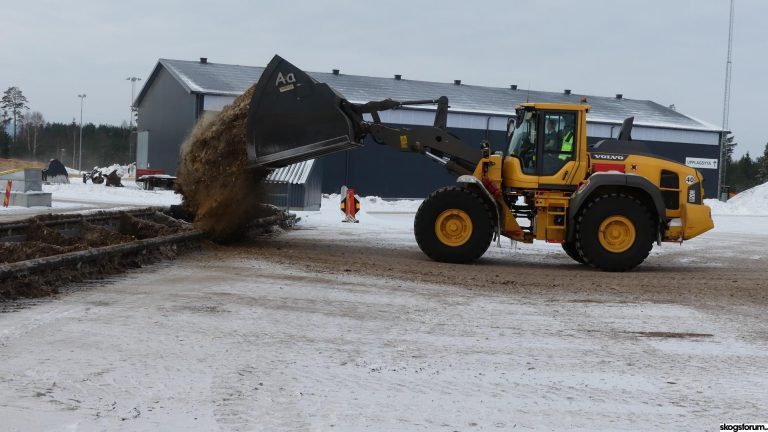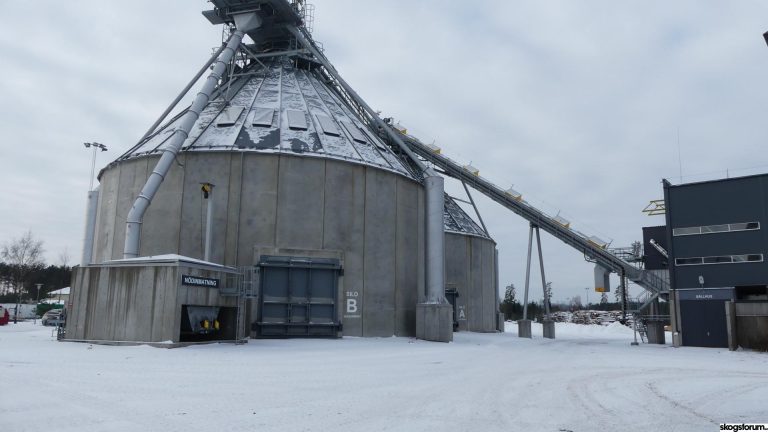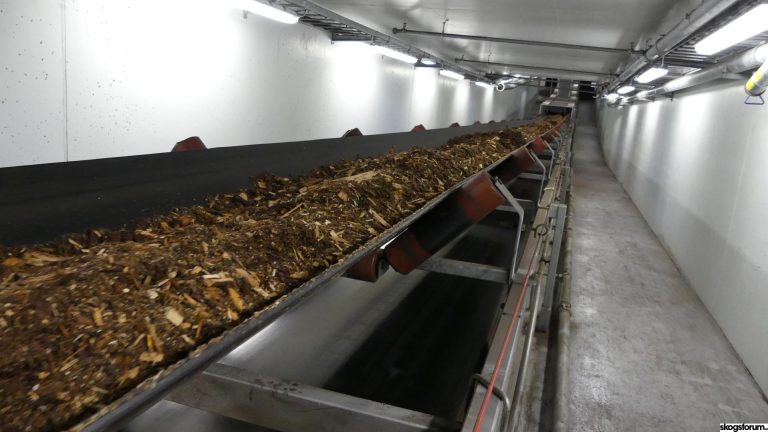Fuel from the forest is still a third assortment. To produce sawlogs and pulpwood is the main purpose of forestry. If there are any “leftovers”, that could be suitable for fuel. But the market for wood fuels from the forest is slowly becoming more and more important. If nothing else, it sets the bottom price for the pulpwood, at least when wood fuels are in high demand like during a cold winter. So, what happens with the wood fuel when it arrives at the combustion plant? Torbjörn at the sister site Skogsforum visited one to find out.
Torsvik woodchip fueled combined heating and power plant
Torsvik thermal power plant is owned by the municipality of Jönköping. A small town in south Sweden that for forestry people is most famous for the forestry show Elmia Wood.
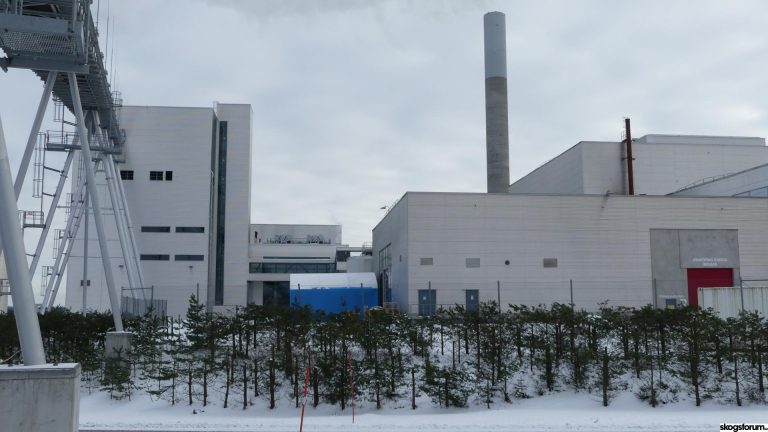
There are two boilers at Torsvik, one for wood fuel and one for municipal waste. Each of them has a capacity of 100 Megawatts. The plant produces totally 670 GWh district heating and 220 GWh electricity per year. The heating is enough for 30 000 households and industries. The electricity for 25 000 households.
Both boilers are connected to the same district heating net. They also share the same chimney, but they have completely separated handling of the fuels. Also, the waste boiler has a separate flue gas purification system. The fuel storage for the waste boiler is a giant (stinking) barn where the waste trucks dump their loads.
The fuel storage for the woodchip boiler is an open-air terminal where chips, sawdust and bark are delivered. Some wood fuels come as slash and logs and is chipped on site. There is room for 50 000 cubic meters woodchips at the terminal.
Mainly municipal waste
The waste boiler is the main boiler. It runs 11 months and is maintained one month per year. The wood fueled boiler runs approximately eight months per year depending on the outdoor temperature. Basically, the wood boiler is a spare that should cover up for the waste boiler when needed. Normally only waste and different wood-based fuels, such as chips wood powder and pellets, is used. But in case of sudden outdoor temperature drop, oil is used to light the wood boiler. The system is slow at the start, it can take up to 12 hours before the wood boiler can run/burn at full capacity.
Totally the fuel mix is 52 % municipal waste, 46,7 % wood fuels and 1,3 % oil.
Mega thermos and water cooler
Apart from the two big boilers, there are two other eye-catching buildings at Torsvik. One of them is a giant thermos that stores hot water during the night to make sure there is enough for all the showers, etc. in the homes in the morning. The need for hot water is very much higher in the mornings than during the rest of the day, and this is solved with this big accumulator tank, or “thermos”.
The other one is a water cooler that is used in the summer when the district heating net can´t take all the heat produced by the waste boiler. The boiler must run anyway as it also produces electricity. That is no problem – the waste is not only free of charge, the plant also gets paid to burn the waste!
To the right, a cooling system to Cool off water that the district heating system can’t take in the summer. The boilers still have to be active as they also produce electricity.
The cheaper the fuel – the more expensive the boiler
The decision which fuel mix to use is due to many factors. There is an obvious correlation between fuel cost and boiler investment. The cheaper the fuel, the more expensive the boiler. If you use municipal waste as fuel, you still get paid to use it. But on the other hand, you will need a very expensive plant to cope with all the environmental issues and to handle the toxic ashes. Some 20 % (dry weight) of the waste is left as ash that must be stored and handled safely.
When it comes to refined wood fuels, such as pellets and wood powder (or oil for that matter) the situation is the other way around. The fuel is more expensive, but the investment is much cheaper. As for woodchips from the forest, the investment is something in the middle between waste and refined wood fuels.
Recipe for wet chips
Unlike a home boiler, that need dry wood as fuel, a boiler of this size should have a certain moist ratio. Around 45 – 50 %. That is more or less fresh, or wet fuel. The reason this is possible, is that you can catch the heat in the steam that goes through the chimney. This means that the efficiency is very high. Of added energy (fuel) to this plant, a little over 30 % becomes electricity via a steam turbine. The rest is heat, meaning that as good as 100 % of the fuel is utilized during the cold season. In the summer, as mentioned before, some water has to be cooled down as the district heating system can´t take it.
The wood fuels at Torsvik
The fuel terminal at Torsvik includes several piles with different types of fuels.
– Bark
– Sawdust from sawmills
– Chips from forest residue/slash
– Second grade logs from the forest
Sometimes also stumps are brought to the terminal, or chips from stumps. This is however unusual as stumps are normally not harvested in the forest (in Sweden). They turn up when forest land shall be converted into some other kind of land, like industry estate or similar.
There is a measuring station on site where all the arriving wood fuels are measured and documented. The loads are weighed, and samples are taken from each load to determine moist ratio and quality of the fuel. The samples are weighed raw, then dried and weighed again to decide the moist ratio. This process takes about 24 hours. The main part of the arriving fuel is paid by energy content in MWh (Megawatt hours). To get 1 MWh you will need 0,9 cubic meter chips with a small variation due to moist ratio.
Wheel loader cocktail
In the middle of the terminal there is a mixed pile of chips. Two wheel loaders mix the fuel to get the optimal moist ratio and fraction for the boiler. Bark, sawdust, log chips and slash chips. A chipper operates on the terminal this day. The wheel loaders fill their buckets in the different piles and puts the fuel in the mixed pile, all day long.
They also feed the 278 meter long conveyor that brings the fuel to the boiler. The job is done in two shifts at the terminal during the weeks. Before the weekend, two silos of 5 000 cubic meters each should be filled up to feed the boiler during the weekend.
When the wood boiler is in use it needs one truck load (approx. 100 cbm) per hour, 24 hours a day. Totally 4 500 truck loads per year is needed. The chips from the forest are purchased within a radius of 50 kilometers (31 miles) from the plant. Bark and sawdust are transported longer distances, approx. 100 kilometers.
Film and more photos
Here is a film from the Torsvik CHP plant:
and here are some more photos:
Film and photos: Torbjörn Johnsen







